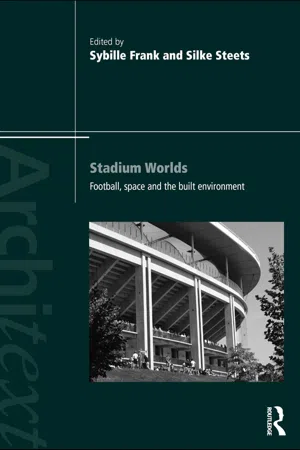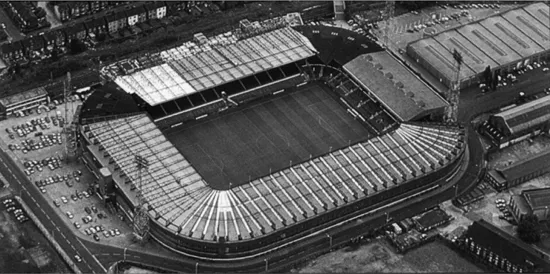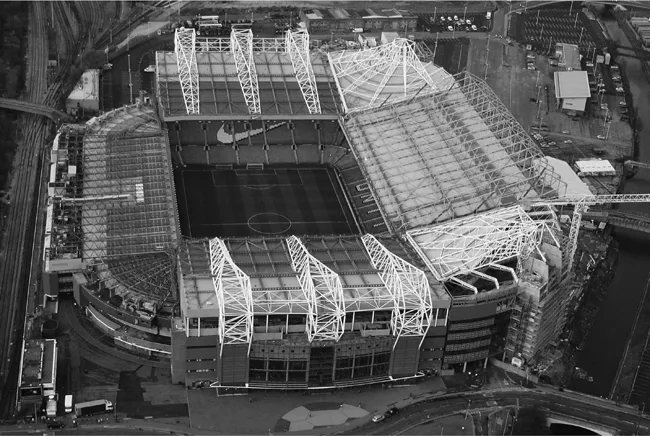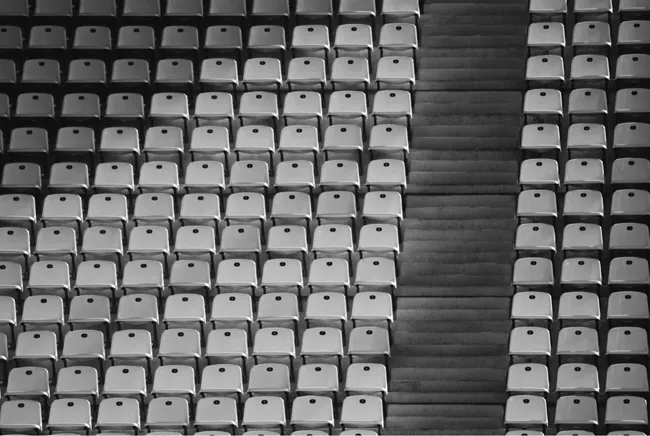
This is a test
- 306 pages
- English
- ePUB (mobile friendly)
- Available on iOS & Android
eBook - ePub
Book details
Book preview
Table of contents
Citations
About This Book
Analyzing football as a cultural practice, this book investigates the connection between the sport and its built environment. Four thematic sections bring together an international multi-disciplinary range of perspectives with particular focus on the stadium.
Examples from architectural design, media studies and archaeology are used while studying advertising, economics, migration, fandom, local identities, emotions, gender, and the sociology of space. Texts and case-studies build up this useful book for lecturers and researchers in sociology, cultural studies, geography, architecture, sport and environment.
Frequently asked questions
At the moment all of our mobile-responsive ePub books are available to download via the app. Most of our PDFs are also available to download and we're working on making the final remaining ones downloadable now. Learn more here.
Both plans give you full access to the library and all of Perlego’s features. The only differences are the price and subscription period: With the annual plan you’ll save around 30% compared to 12 months on the monthly plan.
We are an online textbook subscription service, where you can get access to an entire online library for less than the price of a single book per month. With over 1 million books across 1000+ topics, we’ve got you covered! Learn more here.
Look out for the read-aloud symbol on your next book to see if you can listen to it. The read-aloud tool reads text aloud for you, highlighting the text as it is being read. You can pause it, speed it up and slow it down. Learn more here.
Yes, you can access Stadium Worlds by Sybille Frank, Silke Steets in PDF and/or ePUB format, as well as other popular books in Architecture & Architecture General. We have over one million books available in our catalogue for you to explore.
Information
Part I
The Politics of Representation and Design
Chapter 1:
The New European Stadium
Anthony King
INTRODUCTION
Consider two images of Manchester United’s ground, Old Trafford, the first taken in 1984 (Figure 1.1) and the second in 2006 (Figure 1.2).
A radical transformation has manifestly taken place. With the exception of the South Stand (furthest away in Figure 1.1 and on the left in Figure 1.2),1 the ground has been entirely rebuilt. A low, dull structure has been replaced by a bold edifice of bright steel and glass. Old Trafford’s renaissance may be striking but it is far from unique. On the contrary, since the 1990s, new stadia have proliferated across Europe. One of the first examples of this renovation was the San Siro Stadium in Milan reconstructed in 1990 for the World Cup. Visitors, at the time, were awed by the monumental new ground with its concrete bastions and latticed roofing.
In Germany, Schalke has recently moved from the Parkstadion to the bright dome of the Veltins Arena (Figure 1.5), while Bayern Munich relocated to the radical new Allianz Arena in 2004 (Figure 1.7). In France, the Stade de France in

Figure 1.1 Old Trafford, from the north-east, looking towards the South Stand, 1984.

Figure 1.2 Old Trafford, from the east, looking towards the West Stand, 2006.
Paris represented the pinnacle of stadium redesign which occurred for the 1998 World Cup. In Portugal, Benfica’s new Stadium of Light, Porto’s Dragão Stadium (Figure 1.4) and the extraordinary Braga Stadium, abutting an open quarry, all appeared for the 2004 European Championship. In Holland, Ajax now plays in the innovative Amsterdam Arena, built in 1996, while PSV Eindhoven’s Philips Stadium features a bold new stand. Central and eastern Europe has not been excluded from these developments. Although many grounds remain unchanged, FC Moscow Lokomotiv now plays in a new all-seater stadium which demonstrates the new design features.
However, especially in Western Europe where capitalist investment has been highest and international football tournaments, the European Championship, World Cup and the Champions League, have consequently been played most frequently (cf. Banse, Chapter 7 in this volume), the transformation has been particularly dramatic and widespread. In themselves, each of these structures is impressive but together they represent an architectural paradigm shift in Europe. The football ground of the twentieth century has been replaced by the stadium of the twenty-first century.
Although local conditions have produced unique structures at each location, there is a strong family resemblance between the new stadia. In particular, three distinctive features distinguish them from the old European grounds of the twentieth century: seats, roofs and glass. The new European stadium is all- or nearly all-seater (sometimes with the capacity to turn standing areas into seating for major matches), its stands are covered by roofs and it has a glass façade.
As an important cultural artefact, architecture has always embodied and been a reflection of wider social reality, as European history demonstrates. From the first century BCE until the fall of the Roman Empire in 476, the European political landscape was similarly studded with arenas. In each city, the arena was a decisive landmark and even today, the city of Rome is dominated by the Collosseum. The spectacles which occurred in these arenas illuminated Roman culture in all its stark brutality. Although the crowd might plead for the life of a gladiator, the decision of life and death – as in the rest of Roman life – rested with the emperor alone. The Roman spectacle was a central ritual in later Roman civilization whereby the social hierarchy from Emperor, to citizens, slaves and criminals was re-affirmed. The arenas which appeared in Europe from the first century BCE were a manifestation of the pax romana then. Today’s new stadia might be seen in a similar light. Although Europeans live under a quite different political regime, the new European stadium may similarly illustrate contemporary social and political hierarchies as the Roman arena once invoked the authority of the Emperor (cf. Kratzmüller’s Chapter 2 in this volume).
The new stadium may be seen as a manifestation of globalizing economic flows which have coalesced around professional football, pointing to the wider transformation of social and political hierarchies. They represent the appearance of a new social and political settlement in Europe. Indeed, the new European football stadium is, perhaps, emblematic of much wider developments. This stadium has itself proliferated globally as a result of international football tournaments and above all the World Cup. The new European football stadium can now be found in Brazil, Korea and, for the 2010 World Cup, in South Africa. Indeed, the stadium has become a generic model for all sporting arenas today, with Olympic stadia in Sydney, Athens, Beijing and (now) London demonstrating the same features as the new European football stadium. As the physical embodiment of wider social and political processes, the new European stadium may provide a perspicuous focus for understanding fundamental changes which are being precipitated by globalization not only within football but within society much more widely.
SEATS: COMMERCIALIZATION AND CONTROL
The introduction of seats into European stadia occurred most radically in Britain following the Hillsborough stadium disaster in 1989, when 96 died. There had been a number of disasters in Britain in the post-war era, notably at Burnden Park in 1946 (33 dead) and Ibrox in 1971 (66 dead), where spectators were crushed as a result of collapsing stands or poor stadium design. At Bradford in 1985 (56 dead), victims were burned to death as a result of a dropped cigarette igniting rubbish, which had accumulated for decades under the main stand. Hillsborough proved to be the catalyst, however, not only because it was the most lethal, but also because it convinced Margaret Thatcher that radical change was required. After Hillsborough, a fundamental renovation of British football grounds was demanded by the Conservative Government and dominant sections of British society. To that end, Lord Chief Justice Taylor, commissioned to write an inquiry into the disaster, outlined a fundamental reformation of British football. His report (1990) into the Hillsborough Stadium disaster surprised most commentators and interested parties with its breadth and insight. It sought to create a ‘new ethos’ in British football in which stadia would be more welcoming, fans would be treated better and the catastrophes of Bradford and Hills-borough would be impossible.
Having weighed up various proposals, including identity cards which were favoured by Margaret Thatcher, Taylor argued that the single most likely measure to be effective was the installation of all-seater stands and the destruction of standing terraces: ‘I therefore conclude and recommend that designated grounds under the 1975 Act should be required in due course to be converted to all-seating. I do so for the compelling reasons of safety and control already set out’ (Taylor 1990: 16). Consequently, by the mid-1990s, all grounds in the top divisions of English and Scottish football were required to be all-seater.
The radicalism of Taylor’s report was a product of the depth of the crisis in British football in the late 1980s, but his report was consonant with a wider trend in European football at the time. Following the Heysel disaster in 1985, in which poor facilities played a role, UEFA (Union of European Football Associations) was forced to consider the issue of stadium design. Today, UEFA has established its own specialist Stadium and Security Committee, chaired by Vice-President of UEFA Senes Erzik, which has developed a system of stadium rating and a series of inspection trips. As Erzik has emphasized, UEFA explicitly saw the Heysel disaster as the origins of their current approach: UEFA
was at the forefront of moves to improve safety and security at football matches in the wake of the Heysel Stadium disaster in Belgium in 1985, with stringent security requirements and provisions for all-seated spectators put into place at UEFA matches. By doing this, UEFA made a key contribution in the development of modern, multi-purpose venues in which fans can watch football matches in total comfort and safety.2
In 1985, FIFA (International Federation of Association Football) similarly began to recognize the importance of stadium design and both international federations began to impose stricter stipulations on national federations and clubs. Consequently, starting with Italia 1990, successive World Cups and European Championships have propelled a cycle of ground reconstructions in Europe. Thus, France 1998, Netherlands and Belgium 2000, Portugal 2004, Germany 2006 and Austria and Switzerland 2008 have all redefined the concept of the stadium in Europe.3 The all-seater stadium had become the norm in European football.
The introduction of all-seater stadia represented a profound transformation of football grounds in Europe which has required enormous levels of investment. However, despite this obstacle, there were clear advantages to the new all-seater paradigm for clubs and federations. These advantages were particularly obvious in England, where the grounds which they replaced were among the worst in Europe for violence and poor facilities. Above all, seats encouraged a more restrained consumption of the sport, in place of the sometimes aggressive masculine displays typical of the 1980s (cf. Chapter 10 in this volume). In his famous analysis of the penal system, Foucault (1995) utilized Bentham’s idea of the panopticon to describe the distinctive features of the modern prison. In contrast to the corporal tortures of the medieval and early modern periods, Foucault sought to highlight the distinctive features of the modern prison of the nineteenth century. The modern prison did not focus on the body of the prisoner, as did medieval torture, but specifically on the mind of the inmate. By isolating prisoners into single cells and submitting them to total surveillance, the modern prison sought to inscribe legal codes of conduct onto the consciousness of criminals who had irrationally committed themselves to crime. For Foucault, isolation and surveillance were the two central mechanisms of state control. In comparison with Foucault’s panopticon, the plastic-bucket seat seems an innocuous innovation. It does not suggest itself as an obvious method of social control. Yet, in fact, the installation of seats in European stadia has profoundly altered the social space within grounds and has had a potent disciplinary effect. Certainly, football clubs, UEFA and FIFA all recognized the pacifying function which the seat could serve (cf. Conclusion).
As with the prison cell, the plastic seat disciplines through two basic functions. First, in contrast to the terrace, the seat isolates. It, therefore, obstructs close physical interaction between fans. The atomization of the spectator hinders the group dynamics which lead to crowd activity and potentially to violence. It is particularly noticeable in English grounds where, unlike Ultra groups in the rest of Europe, fan cultures are unorganized that the institution of seats has dissipated atmosphere in the grounds. The isolation of fans from one another into single seats individualizes spectators impeding the initiation of chants or choreographies. Second, by isolating spectators and assigning them a particular seat in the ground, supporters are now subject to highly effective surveillance from the club and police within the ground. Most clubs have surveillance systems

Figure 1.3 Plastic-bucket seats.
which can quickly identify spectators and seat numbers in any part of the ground. As Lord Chief Justice Taylor himself noted:
It is possible to have disturbances in seated areas and they have occurred, but with the assistance of CCTV [Close-Circuit Television], the police can immediately zoom in with a camera and pinpoint the seats occupied by the troublemakers as well as the troublemakers themselves.
(Taylor 1990: 12)
Seats are not simply about control, however. Football’s audience was severely restricted in the 1970s and 1980s substantially due to the intimidating atmosphere and the threat of crowd violence in the grounds, especially in Germany and England. Seats, therefore, represent a second reform programme which was ...
Table of contents
- THE ARCHITEXT SERIES
- Contents
- Illustrations
- Contributors
- Preface and Acknowledgements
- Introduction
- Part I The Politics of Representation and Design
- Part II Architecture and Media
- Part III When Global Flows Meet Local Cultures
- Part IV Gender and Space
- Part V Emotions and the Body
- Index